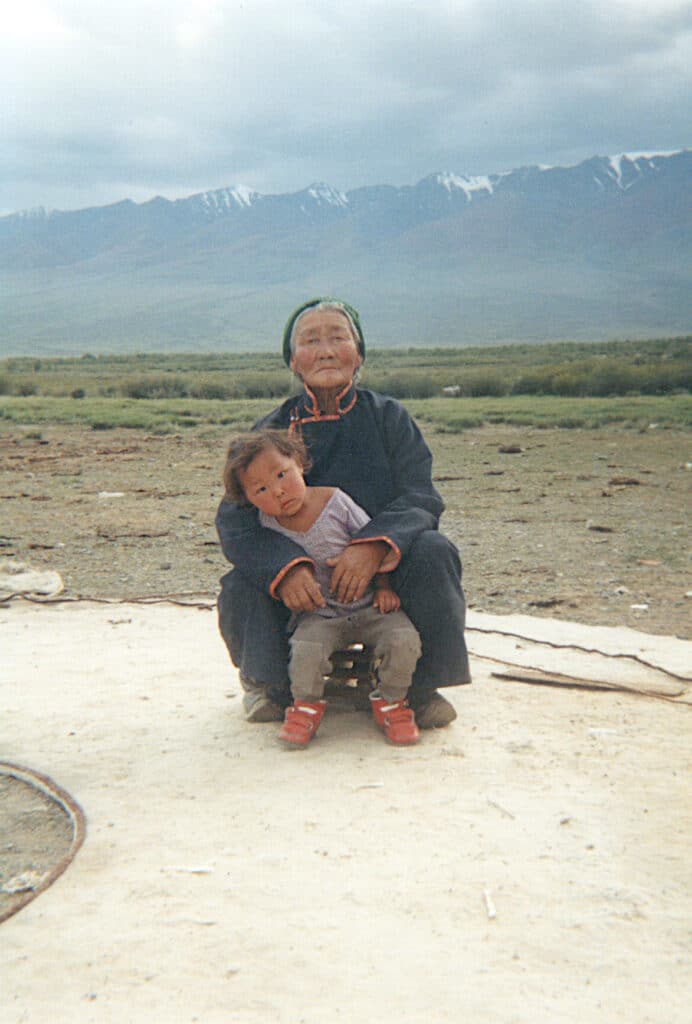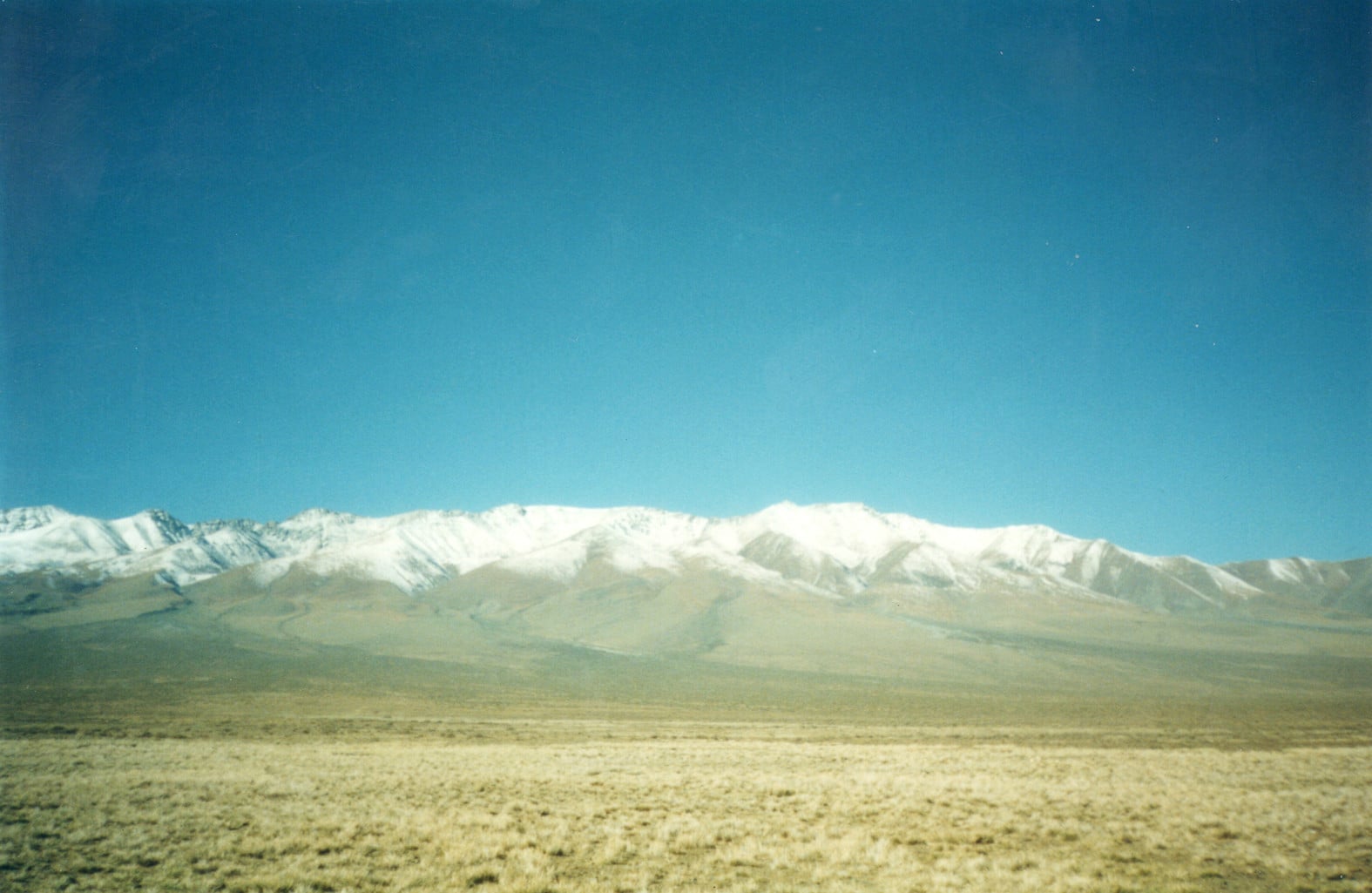
.
Chandman’ Sum Mongolia 1993
The next day Buriad and I found a stream to wash in and drink some water. I was still ill and struggling on the motorbike. We climbed up and round the Jargalant Altai and saw what seemed the endless plain of Chandman District. We went on it seemed forever, saw no one and I even had illusions of seeing gers. Eventually we did spot a settlement, all I could do was rest while Buriad talked. We stopped at Buriad relations a little further on. Here we were given warm tea and offered food. I was just about able to sip down the tea and nibbled on some goats cheese. I slept and then we were given some more tea and took the obligatory family photos and went on our way with Chandman village nearby.
About 300 metres on Buriad stopped at another group of Gers and the same thing happened. They gave Buriad some gifts of food and I was given what looked like a head sculpted very loosley out of the root of a tree or bush. I was given the impression that this would be good for me.
When we left Buriad indicated that Tserendavaa’s Ail was about 30 minutes away. Eventually after almost two days of travelling we arrived at a group of three Gers about 2 or 3 Km from Chandman’ village. This was Tserendavaa’s late summer camp.
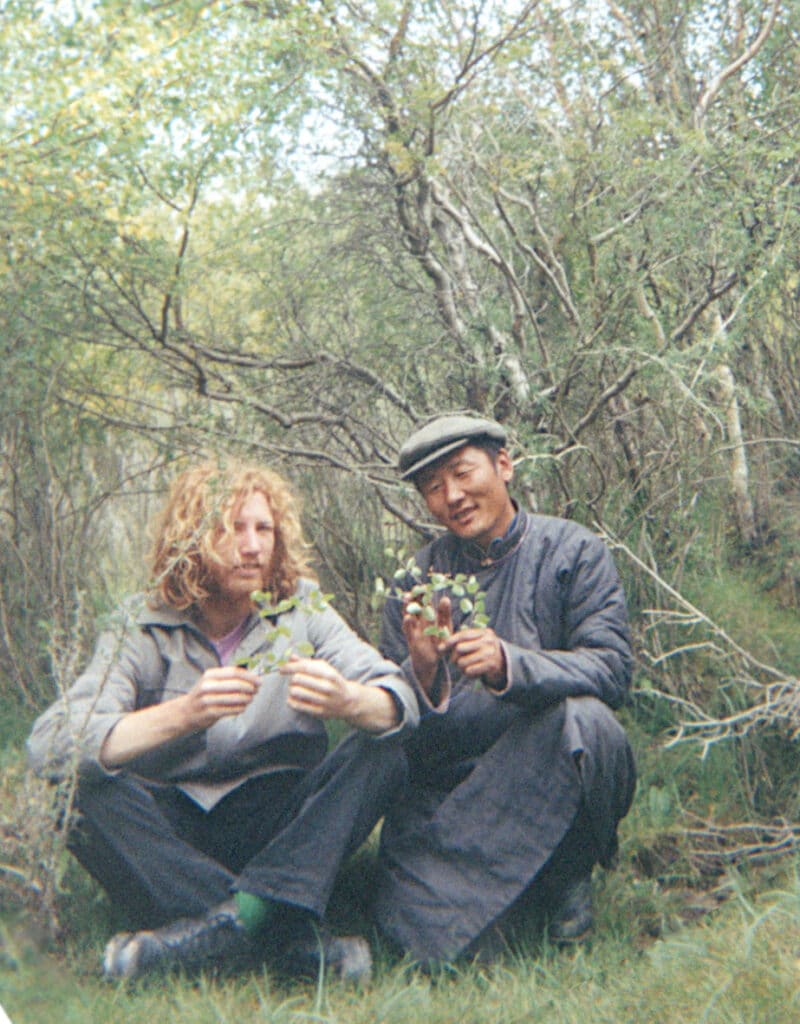
I was greeted by Tserendaava and gave him a white silk scarf or khadakh and the letter that Gereltsogt had written to him for me. He read it and offered us a toast of vodka and then voiced his Khöömii while playing his tobshuur (2 string fretless lute), I played some tin whistle and showed him photos plus the programme notes from the concert where I first heard him in London in 1988. An amazing circle was completed. I was so tired and still unwell that I lay down to sleep while Tserendaava and Buriad talked. In fact I slept through to the next morning until Buriad proded me in the arm to wake me. We all went to Buriads sister which was near a small outcrop of trees near where some potatoes were growning. We took a few few photos and then it was time to say good bye to Buriad. Even though we could not really talk to each other, somehow we managed to communicate through his knowledge and my enthusiam. The journey from Khovd to Chandman sum seemed like some kind of trial or maybe an initiation for me.
Tserendaava’s wife Tsagaantsogts seemed to be in charge of the ger. It was amazing that even though she spoke no English she could apparently understand my needs. Maybe she had an acute ability to read my body language.
Tserendavaa immediatley wanted to organise Khöömii lessons for me. We eventually agreed on a price for 10 lessons. The first was was quite difficult and tiring. mainly it was attempting to replicate the basic sound of Khöömii before overtones were introduced. This compression of the sound required a muscle control that was difficult to replicate. Tserendavaa used the word shakhaltai and showed me an excercise using various vowels. He wanted me to practice for an hour. After about 10 minutes my voice was exhausted. I tried in my very bad Mongolian to explain this to him. Tserendavaa was not very impressed. I had a very small Mongolian to English dictionary which I had bought in Ulaanbaatar. He found two words which he repeated to me. One was ‘practice’ and the other ‘difficult’. I managed to practice for one hour but it took most of the day because I decided to rest after five minutes of shakhaltai. Over the next three weeks I had regular lessons which started incoporating melodies sung/whistled to me by Tserendavaa who would then voice them in Khöömii. He wrote something down for me in lower case cyryllic script which I managed to get translated back in Ulaabaatar. It basically said that in 5 years time I should be OK. For me this was in relation to singing the compressed root sound of Khöömii and being able to control the harmonics to create a Mongolian melody. back in the UK I had already taught myself how to control the overtones by singing amazing grace. The sessions were difficult and we had our moments together. Tserendaava wanted more money for my lessons. In the end we came to a compromise. I felt so priviledged to learn in the Ger of one of the keepers of a traition.



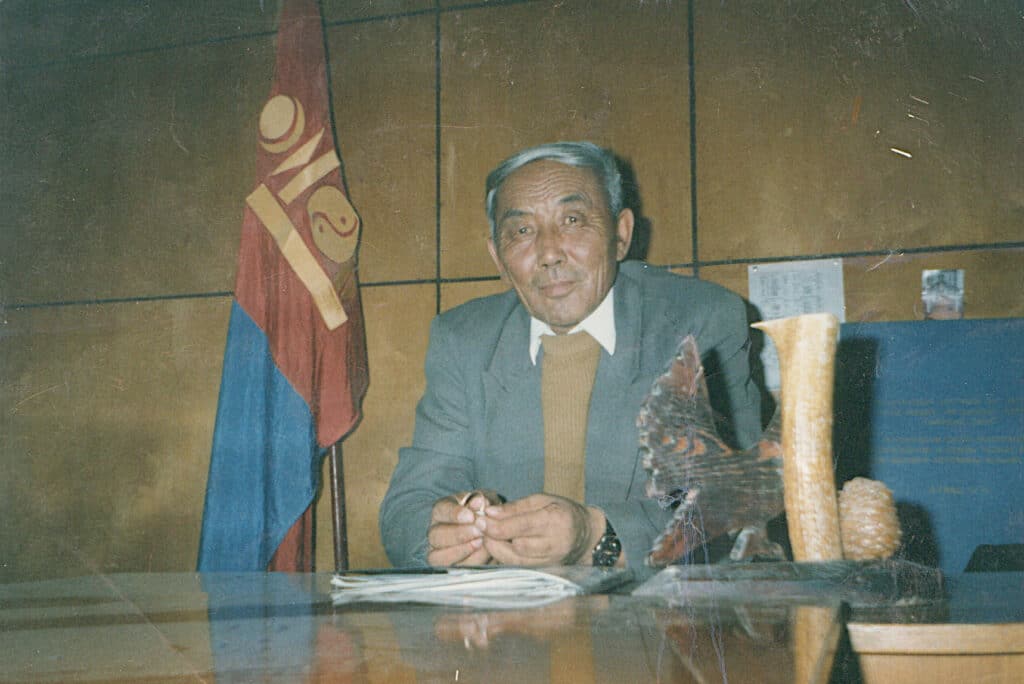
We needed to get permission from him to buy petrol which was in short supply and exchanged gifts of a white silk scarf for him and a Chandman year book for me

I had been trying to meet Davaajav another wonderful Khöömiich, but he was away most of the time hunting in the mountains. Eventually he returned and I was able to hear his own softer, beautiful voicing of Khöömii.
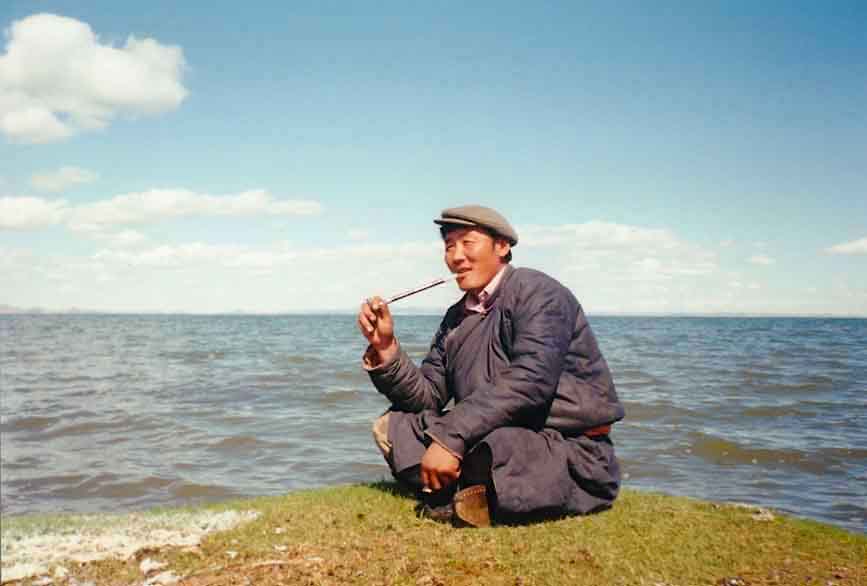
Once we had got the petrol I took a trip on the back of Tserendaava’s motorbike to Khar Nuur to meet some of his friends. On the way we stopped at a “barren” Hillock and Tserendaava gesticulated that he was born there.
Tserendaava’s friends wanted him to perform his
Khöömii. I guess he gets that request many times. He invited me to perform with my tin whitles and show what I had been learning.
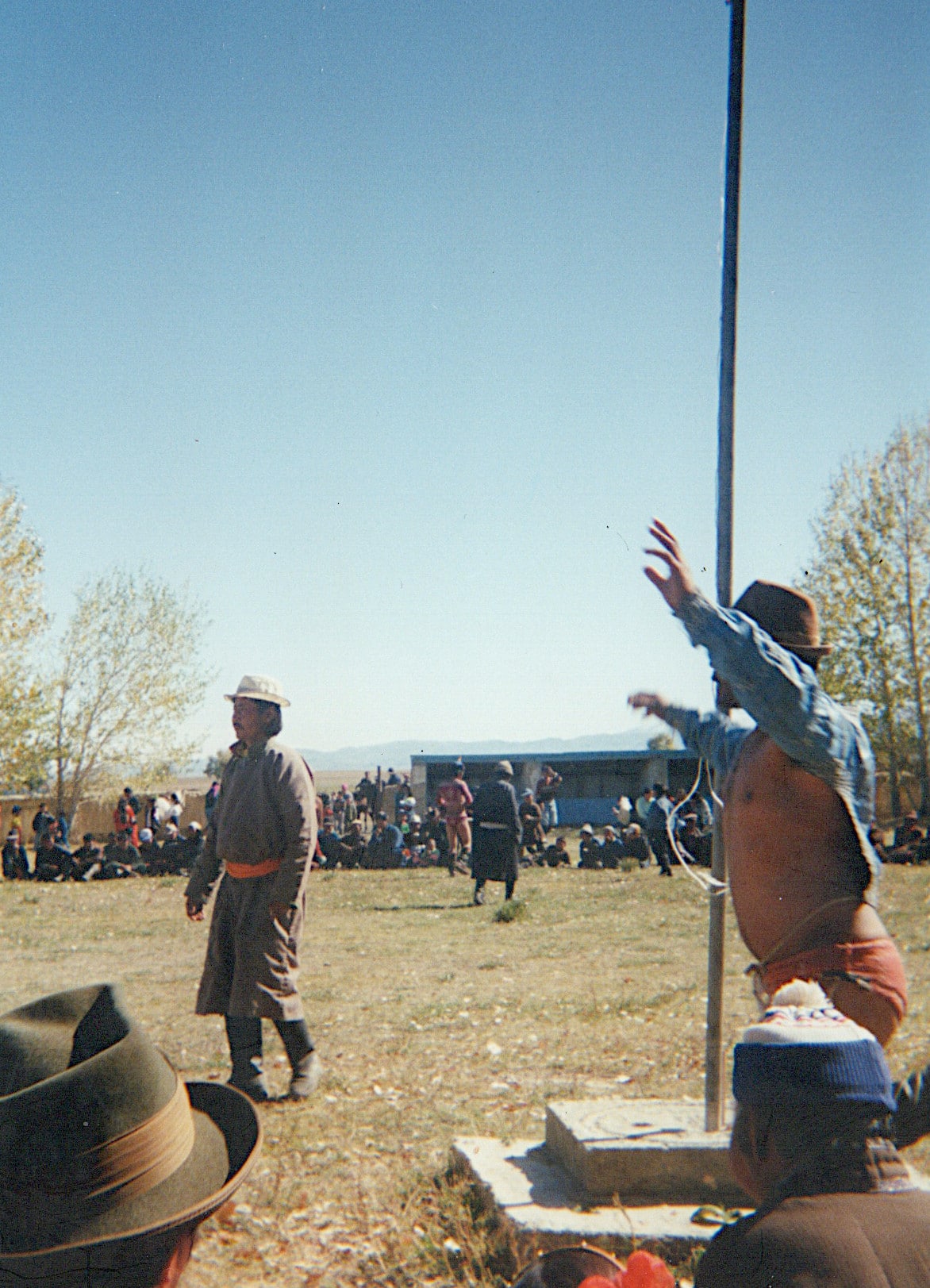
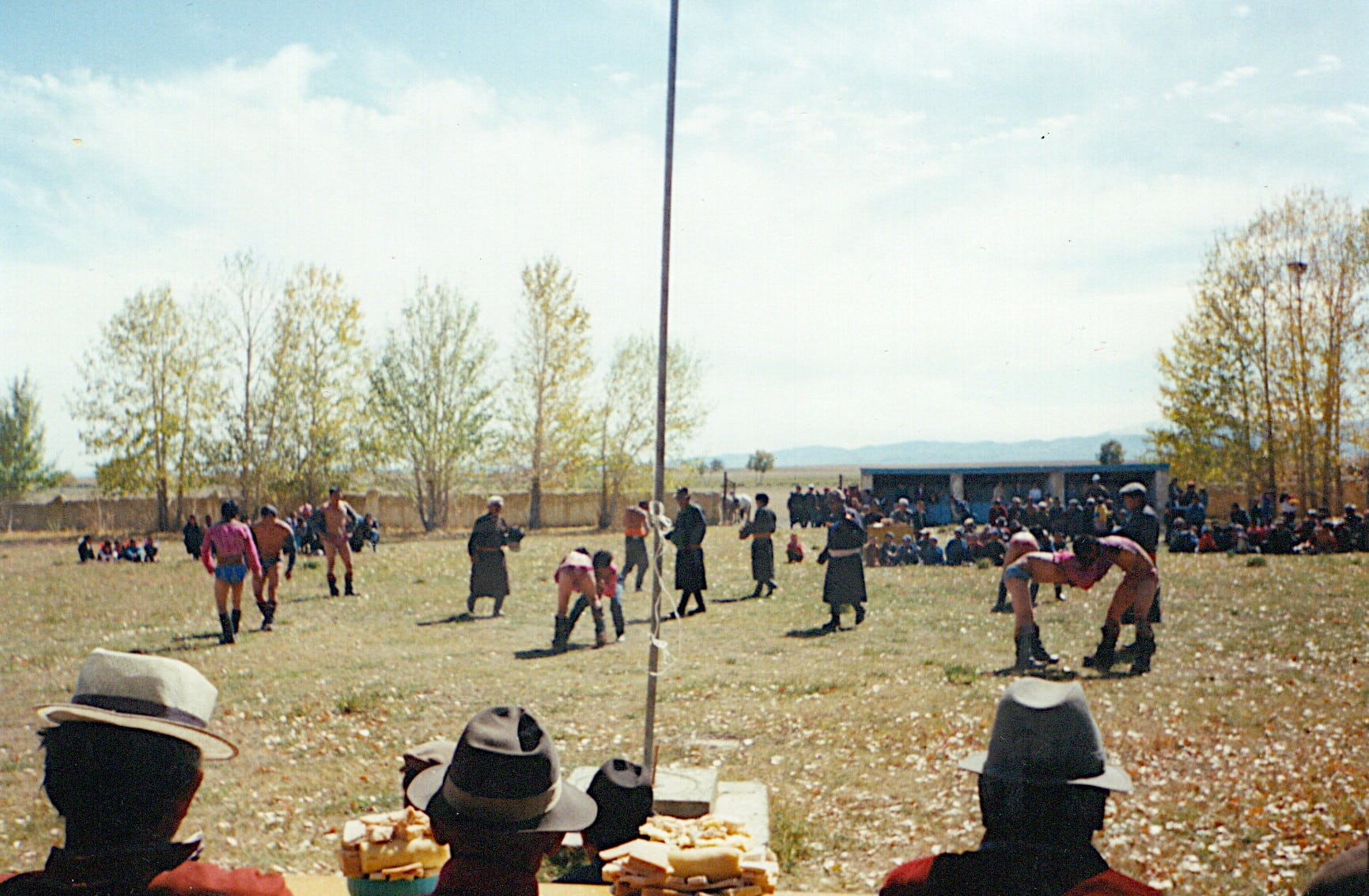
I was fortunate that Chandman Sum Nadaam was held when I was there. This was a time for everyone in the area to gather, attend the sporting events of wrestling and horse racing. The community would dress in their best and at the ‘disco’ in the evening is where the ‘boys met the girls’.
The wrestling is a straight knock out compertition with no catagories. Before each bout the wrestlers enact a ritual dance invoking both mythical and actual birds to aesthetically show the beauty of their flexibilty and strength. They may touch the earth for protection. When a bout was won the winner would do the eagle dance around the pole and threw some dried cheese up in the air in the direction of the officials.
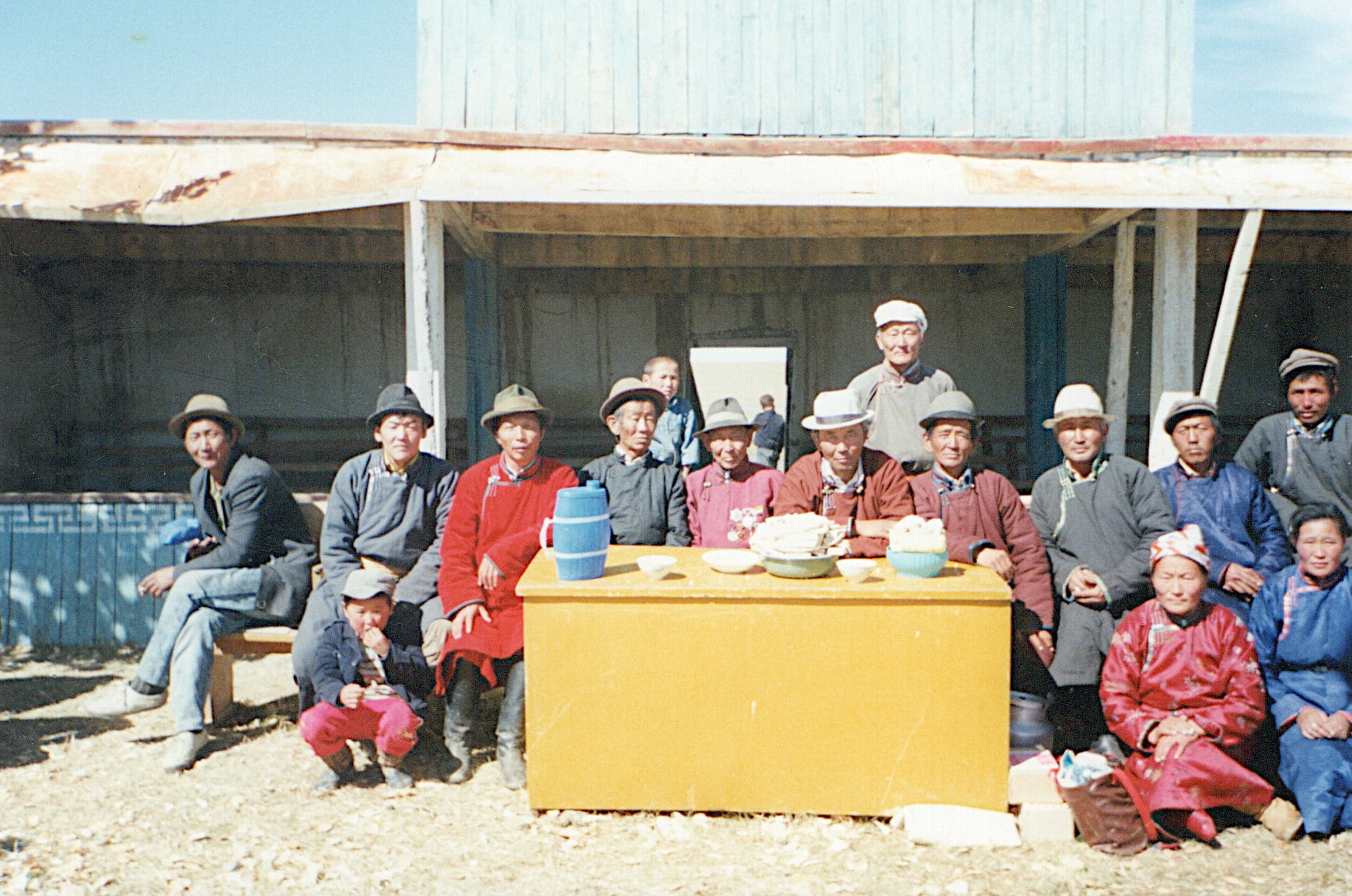
Tserendaava was asked to Khöömiilokh through a battered tannoy style PA, then suprizingly he asked me to Khöömiilokh. I managed to show some of what I had learnt and did my anglii-Khöömiil much to the delight of the crowd.
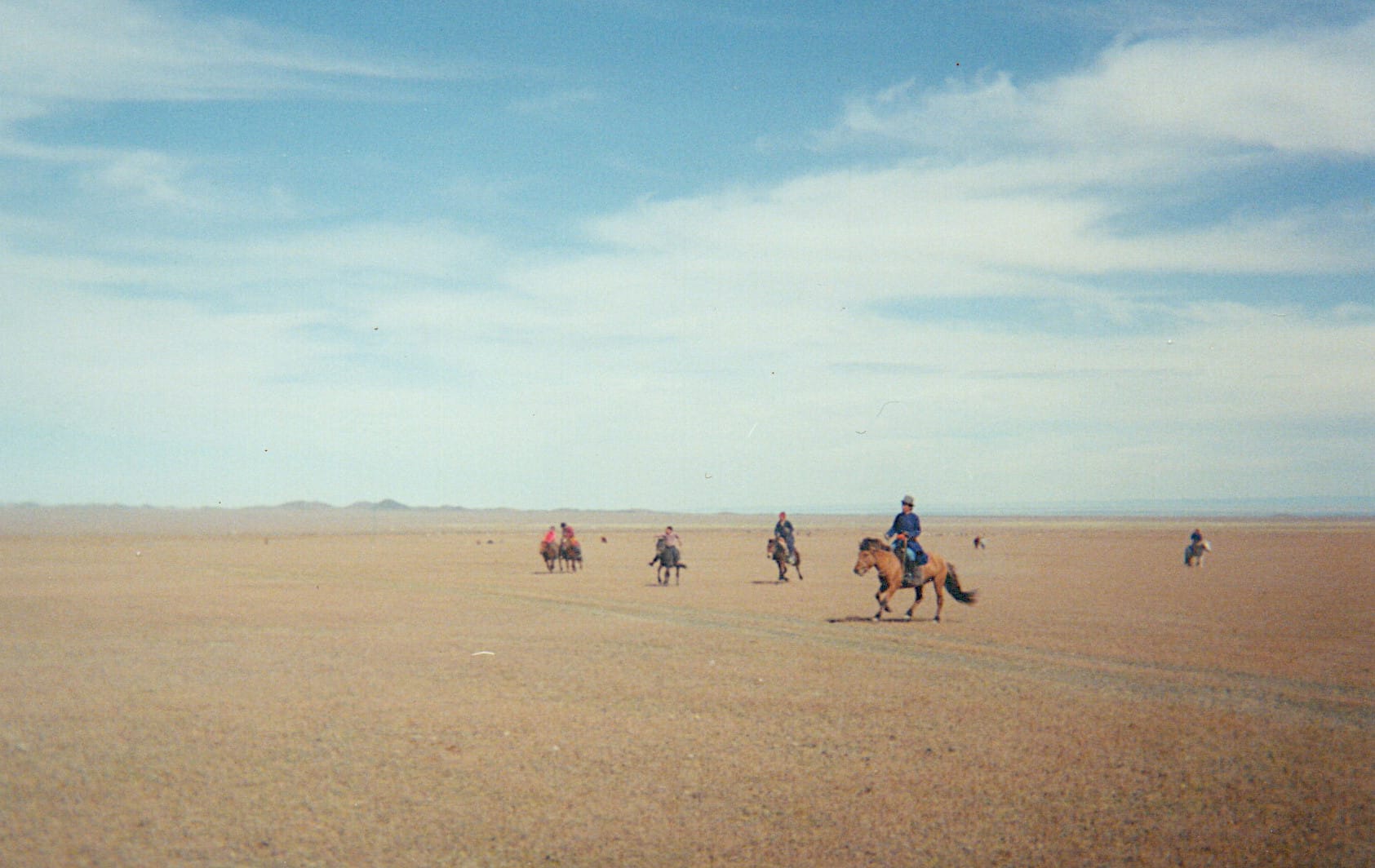
Earlier on in the the the horse racing took place. The jockeys were the children who may have a saddle but mainly rode bare backed. It seemed unorganised to my inexperienced eye, however the riders all started together disappearing into the distance with hopeful parents looking through their binoculars if they had them. After about 20 minutes or so I could see a speck in the distance that was moving in our direction. This turned out to be the first rider who was well in the lead. As the rider approached they were greeted by their family or trainer who was on horseback to much acclaim of the crowd.
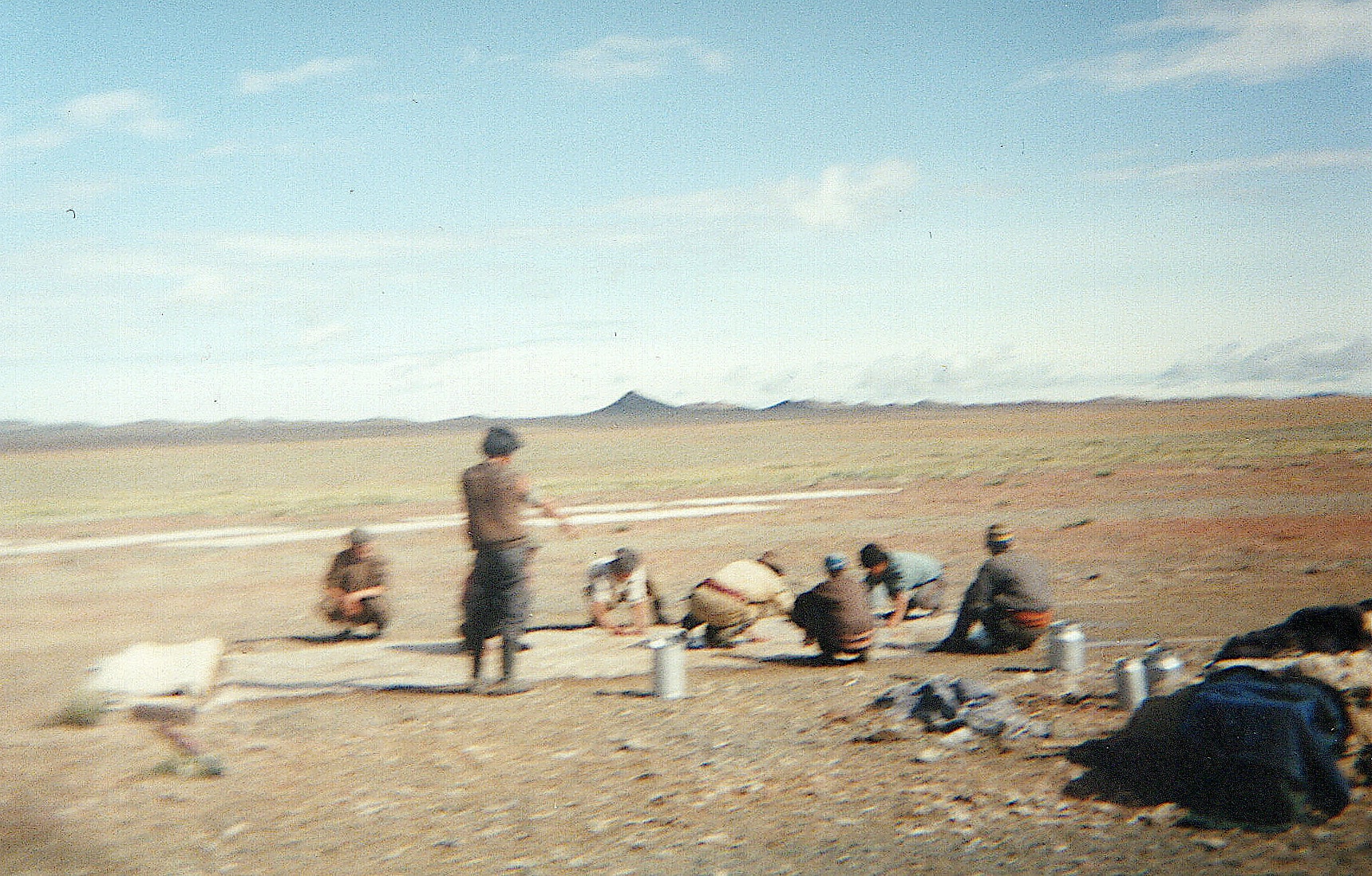
Everyone in Tserendavaa Ail plus Nimdorj the “Isgee (Felt) boss” spent two days making felt. Mongolian felt tents (Ger) are covered with large pieces of felt. These help insulate the Ger. Felt is usually made from the wool of sheep. Once enough wool has been sheared off the sheep, it is sorted into small tufts of wool and almost complete fleeces. The wool (noos) is then “softened” by beating a pile of wool with long thin metals sticks. An old piece of felt is used as a template. The wool and fleeces are carefully placed over this to make a thick mat, which is then soaked with water fetched from a nearby stream.

My job was to fetch the water. When I had time I would practice some Khöömii. The whole thing was rolled up to make a very heavy and sodden roll. Traditionally the roll is hitched to a horse, however nowadays, a tractor is used if the fuel is available. The roll is rolled up and down a flat “runway like” area of ground (200 metres or so) about a dozen times.The action of the rolling heats and compresses the wool so that all the fibres knit together to make felt. This is unrolled and left to dry in the open for a day or so. The first roll of felt was blessed by offering milk and burning incense.

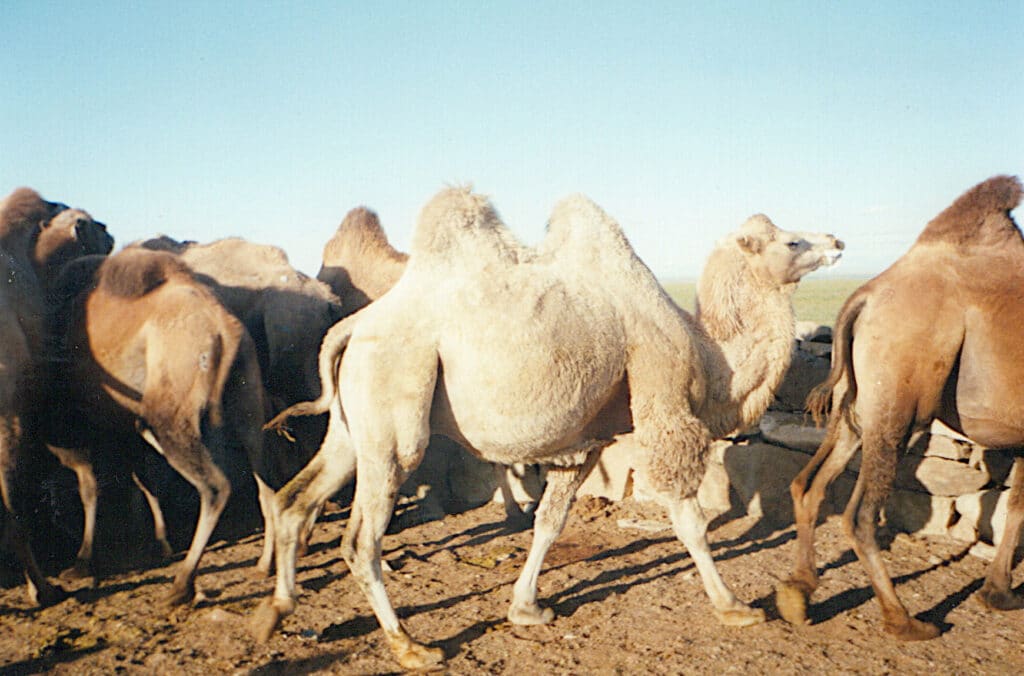

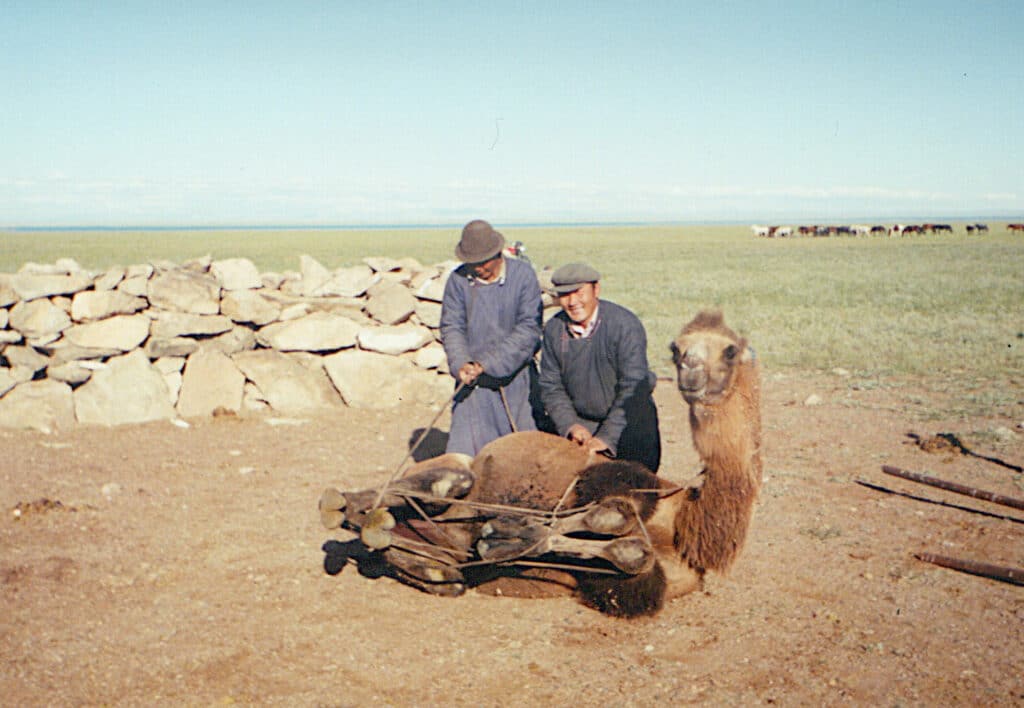
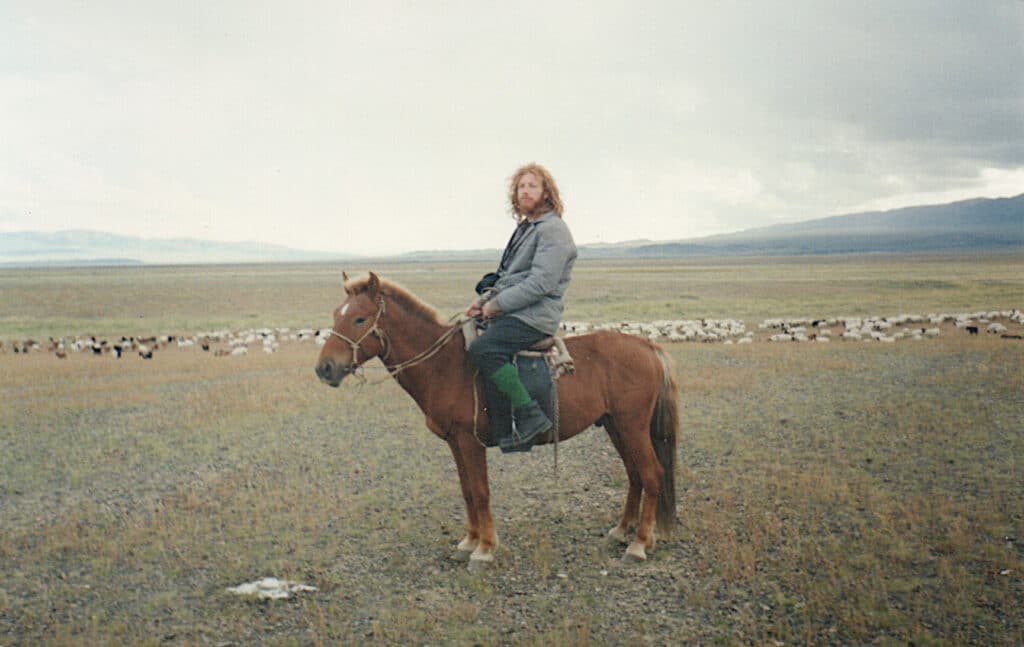
Towards the end of my time with Tserendaava I sometimes felt that life in a ger was claustrophobic. There seemed to be no personal space. So one day I went out for a walk to what looked like a small hill nearby to get away from it all. I got into my stride with a multitude of odours from the grasses, the animals, their dung and the sounds of the animals, the sound of my walking and breathing in the fresh air. After about 10 minutes I heard horses approaching . It was Tserendaava’s brothers. They seem puzzled as to what I was doing. I managed to communicate that I wanted to walk to the hill. This was alien to them and they offered me the spare horse which they had brought with them. I refused and carried on to my goal. They followed. When I reached the hill I accepted the horse to return back to the ail. The horse had a Mongolian saddle which are made of wood with metal studs. Walking the horse was very uncomfortable. After a while we reached the sheep and goats and I tried a little herding to the bemusement of the brothers. then one of them came up to me a exclaimed Chu!. This made my horse gallop! Being a novice I could barely hold on and nearly toppled over the horses head. Eventually one of the brothers came alongside and stopped the horse laughing. We got back to the Gers. I was exhausted and we all had a bowl of tea from the thermos. The brothers had ridden horses since childhood, that was their nature, unlike the city dweller. They were at one with their enviroment and understood its power in both postive and negative ways. I respected them for that.
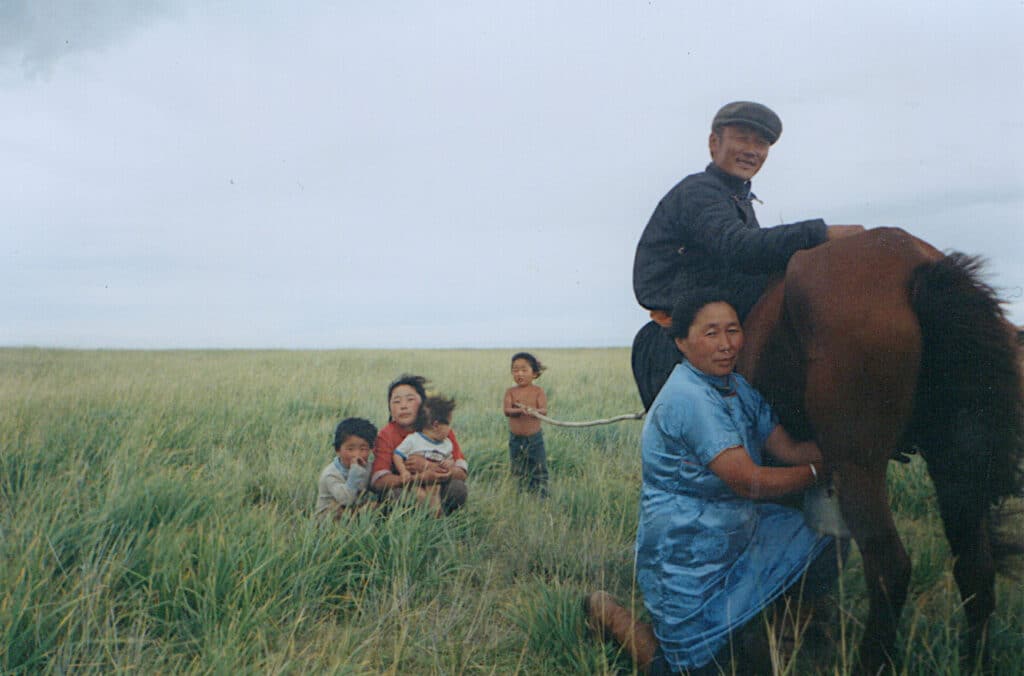
My time was coming to an end in Chandman. Tserendaava was asked to move a family to the Khar Us Nuur side of the Jargalant Altai. This was on the way to Khovd. So I bought the petrol which helped Tserendavaa and the other family. Going into town to get the Mayor to approve of the petrol Tserendavaa bumped into Baatz who was an English teacher. At last I could ask a few pertinet question about Khöömii and also get practical organisational things done. Back at Tserendaava’s Ail I had my last evening meal. Some friends dropped by and we did an impromptu concert, had a vodka toast and I packed.
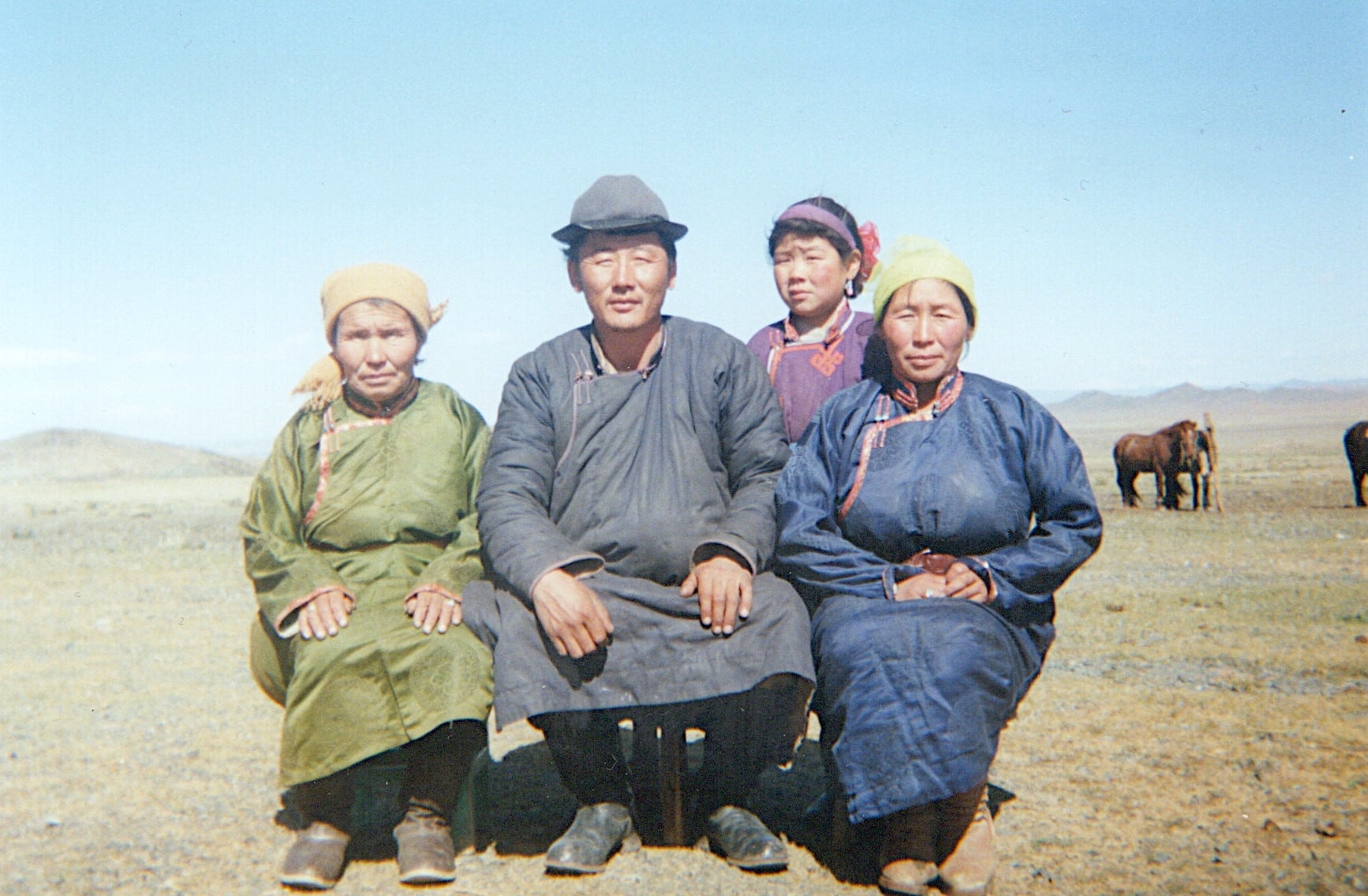
In the morning a trailer had appeared behind Tserendavaa’s truck. Most of his family were travelling with me to Khovd so I said goodbye to the Ail. After about an hour we came across the ail that had 2 gers to be trtansported. It took about 90 minutes to put the gers down and load them into the lorry and trailor. Then with the mountains to the left we slowly reached the mountain pass and saw the majestic Khar Us Nuur. The truck broke down, however Tserendaava managed to fix it in 30 minutes or so. Now between the mountains and the lake it was time to find the autumn/winter grounds for the family. This turned out to be by a well. After a tea we rounded the lake and made the slow climb on the very dusty road to the Khovd Ovoo. From there Khovd was visible. It looked like a city compared to Chandman.
